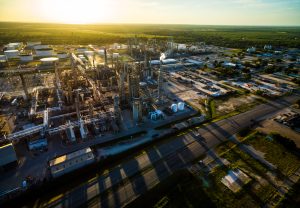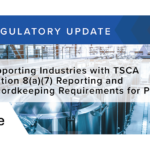
Environmental site assessments are crucial for identifying potential contamination and assessing the risks associated with a property. In El Paso, Texas, Phase 2 environmental site assessments play a vital role in ensuring the safety and sustainability of land development projects. This article will provide an in-depth understanding of Phase 2 assessments in El Paso, outlining their purpose, key components, process, regulatory framework, challenges, solutions, and impact.
Understanding Phase 2 Environmental Site Assessments
Phase 2 environmental site assessments are conducted when a Phase 1 assessment identifies potential contamination on a property. These assessments delve deeper into the potential sources and extent of contamination, providing comprehensive data to make informed decisions regarding property development and management.
The Purpose of Phase 2 Assessments
The primary purpose of Phase 2 environmental site assessments is to determine the presence, nature, and extent of contamination on a property. By evaluating and analyzing soil, water, and air samples, professionals can identify hazardous substances and assess the level of risk they pose to human health and the environment. This information is crucial for appropriate remediation and land-use planning.
During a Phase 2 assessment, a team of experts meticulously investigates the site, leaving no stone unturned. They meticulously examine the soil, searching for any signs of contamination. They carefully collect water samples from nearby sources, analyzing them for any traces of pollutants. Additionally, they conduct air quality tests, ensuring that the surrounding atmosphere is free from harmful substances.
Key Components of Phase 2 Assessments
A Phase 2 environmental site assessment typically consists of several key components:
- Site Investigation: This involves conducting a thorough physical inspection of the site to identify potential contamination sources, such as underground storage tanks or industrial activities.
- Sampling and Analysis: Samples of soil, groundwater, sediments, and other relevant media are collected and sent to accredited laboratories for analysis. These tests determine the presence of contaminants and their concentrations.
- Risk Assessment: The data obtained from sampling and analysis are used to evaluate the potential health and environmental risks posed by the identified contaminants.
Once the samples are collected, they are sent to specialized laboratories equipped with state-of-the-art equipment. Highly skilled scientists and technicians meticulously analyze the samples, employing advanced techniques to detect even the slightest traces of contaminants. They use cutting-edge technology to identify the specific chemicals present, providing a comprehensive understanding of the potential risks.
The process of Phase 2 assessments requires expertise and adherence to regulatory guidelines to ensure accurate results and effective decision-making. Professionals involved in these assessments undergo rigorous training and stay up-to-date with the latest advancements in environmental science. They meticulously follow established protocols and guidelines to ensure that the assessment is conducted with the utmost precision and accuracy.
The Process of Phase 2 Environmental Site Assessments in El Paso
The process of conducting Phase 2 environmental site assessments in El Paso is a crucial step in evaluating potential environmental hazards and ensuring the safety of communities. This comprehensive process typically involves three main stages: initial site inspection, sampling and analysis, and risk assessment.
Initial Site Inspection
During the initial site inspection, environmental professionals conduct a thorough visual assessment of the property in El Paso. This inspection aims to identify potential contaminant sources, such as above-ground storage tanks, chemical spills, or waste disposal areas. By carefully examining the site, experts can pinpoint areas where sampling should be prioritized to obtain accurate and representative data for further analysis.
Furthermore, the initial site inspection may also involve reviewing historical records and conducting interviews with current and previous property owners or occupants. This additional information can provide valuable insights into past land use practices and potential sources of contamination that may not be immediately visible during the visual assessment.
Sampling and Analysis
Sampling and analysis play a critical role in Phase 2 environmental site assessments in El Paso. Environmental professionals meticulously collect samples from various media, including soil, groundwater, surface water, and sediment. These samples are handled with precision, properly labeled, and transported to accredited laboratories for comprehensive analysis.
Moreover, the sampling process may include the use of advanced techniques such as soil vapor sampling or groundwater monitoring to assess the extent of contamination beneath the surface. By utilizing a combination of sampling methods, experts can gather a comprehensive dataset that reflects the true environmental conditions of the site.
Risk Assessment
Following the completion of laboratory analysis, the data obtained from sampling is subjected to a rigorous risk assessment process. This evaluation aims to determine the potential risks associated with the identified contaminants present on the site. Environmental professionals compare the contaminant concentrations with established regulatory guidelines and standards to assess potential impacts on human health and the surrounding environment.
Additionally, risk assessment may involve the use of advanced modeling software to predict the migration of contaminants and their potential long-term effects. By conducting a thorough risk assessment, experts can develop informed recommendations for remediation and mitigation strategies to address any identified environmental concerns in El Paso.
Regulatory Framework for Environmental Site Assessments
Environmental site assessments are governed by both federal regulations and Texas state-specific guidelines. It is crucial to navigate through these frameworks to ensure compliance and comprehensive assessments.
Federal Regulations and Guidelines
In the United States, the Comprehensive Environmental Response, Compensation, and Liability Act (CERCLA) and the Resource Conservation and Recovery Act (RCRA) are the primary federal regulations governing environmental site assessments. These regulations outline the procedures, standards, and reporting requirements for conducting Phase 2 assessments.
Texas State-Specific Regulations
Besides federal regulations, Texas has its own set of regulations and guidelines for environmental site assessments. The Texas Commission on Environmental Quality (TCEQ) provides specific requirements and procedures that must be followed during Phase 2 assessments in El Paso. Compliance with state regulations ensures that assessments accurately reflect potential risks and facilitate appropriate remediation and land-use decisions.
Challenges and Solutions in Phase 2 Environmental Site Assessments
Conducting Phase 2 environmental site assessments can present various challenges. However, innovative solutions can help overcome these obstacles and ensure accurate assessments.
Common Challenges in Conducting Assessments
One common challenge is accessing contaminated areas, especially when dealing with underground sources or restricted properties. Limited historical information and the presence of multiple contaminants can also complicate the assessment process. Additionally, time and budget constraints can pose challenges in ensuring comprehensive sampling and analysis.
Innovative Solutions for Effective Assessments
To address these challenges, technology plays a crucial role. Ground-penetrating radar, remote sensing, and advanced analytical techniques aid in locating and characterizing contaminants, reducing the need for invasive sampling. Collaborative efforts between environmental professionals and property stakeholders also help gather historical information and identify potential sources of contamination. Furthermore, efficient project management and clear communication ensure that assessments are conducted within the allocated time and budget.
The Impact of Phase 2 Environmental Site Assessments
Phase 2 environmental site assessments in El Paso have significant benefits for property owners and the environment. Understanding these impacts is essential for promoting sustainable land development.
Benefits for Property Owners
For property owners, Phase 2 assessments provide valuable information about potential contamination and associated risks. By identifying and addressing contamination early on, property owners can minimize liabilities and ensure compliance with regulatory requirements. This knowledge allows for informed decision-making regarding property development, redevelopment, or sale.
Contributions to Environmental Protection
Phase 2 environmental site assessments also play a vital role in protecting the environment. By thoroughly assessing contamination levels, these assessments contribute to the development of effective remediation plans, preventing further spread of contaminants and minimizing potential impacts on ecosystems and natural resources. Additionally, these assessments support sustainable land-use planning, ensuring that properties are developed in an environmentally responsible manner.
Overall, Phase 2 environmental site assessments are essential in El Paso to ensure the safety, sustainability, and compliance of land development projects. By understanding the purpose, process, regulatory framework, and challenges associated with these assessments, stakeholders can make informed decisions that prioritize human health, environmental protection, and long-term sustainable development.
If you’re ready to ensure the safety, sustainability, and compliance of your land development projects in El Paso, look no further than ESE Partners. Our experienced team of environmental engineers and scientists is equipped to handle the complexities of Phase 2 Environmental Site Assessments and beyond. At ESE Partners, we’re committed to responsibly moving business forward through innovative and sustainable environmental solutions. Don’t let environmental challenges slow your progress. Request A Proposal today and partner with a firm that delivers honest, quality-driven results while improving community quality of life.








